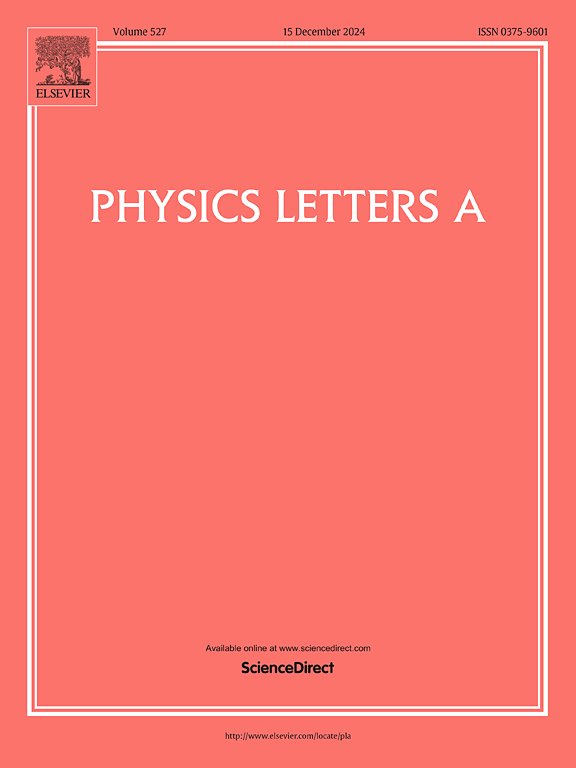(3,0)脱氢DNTs/CNTs异质结构建中的自旋过滤效应
IF 2.3
3区 物理与天体物理
Q2 PHYSICS, MULTIDISCIPLINARY
引用次数: 0
摘要
(3,0)金刚石纳米线(DNTs)是最近出现的一类有序sp3纳米材料,是通过高压固相反应的动力学控制合成的。作为一种具有优异机械性能的多用途材料,dnt在设备应用中显示出巨大的潜力,特别是在复杂的环境中。利用第一性原理模拟,我们已经证明了(3,0)DNTs的部分脱氢可以调节电和磁特性。值得注意的是,通过改变脱氢的位置,材料可以经历从半导体到半金属和返回半导体状态的转变。基于脱氢(3,0)DNTs的自旋器件的潜力代表了一个有前途的途径。我们的研究结果揭示了实现超过99%的自旋极化电流和独特的负差分电阻特性的可行性。此外,通过调整(3,0)纳米管中部分脱氢的单位数,可以有效地调节自旋电流。这些发现有力地表明,基于dnts的器件可以为复杂环境下的理想自旋器件铺平新的道路。本文章由计算机程序翻译,如有差异,请以英文原文为准。
Spin filter effect in heterojunction construct by (3,0) dehydrogenation DNTs/CNTs
(3,0) Diamond nanothreads (DNTs) have recently emerged as a pioneering class of ordered sp3 nanomaterials, synthesized through kinetic control of high-pressure solid-state reactions. As a versatile material exhibiting exceptional mechanical properties, DNTs demonstrate significant potential for device applications, particularly in complex environments. Utilizing first-principles simulations, we have demonstrated that the partial dehydrogenation of (3,0)DNTs enable tuning the electrical and magnetic properties. Remarkably, the material can undergo transition from semiconductor to half-metal and back to semiconductor states by altering the position of dehydrogenation. The potential for spin devices based on dehydrogenation (3,0)DNTs represents a promising avenue. Our results reveal the feasibility of achieving spin-polarized currents exceeding 99 % and distinctive negative differential resistance characteristics. Furthermore, the spin current can be effectively modulated by adjusting the unit number of partial dehydrogenation in (3,0)DNTs. These findings strongly suggest that DNTs-based devices could pave a new way for an ideal spin device in complex surroundings.
求助全文
通过发布文献求助,成功后即可免费获取论文全文。
去求助
来源期刊

Physics Letters A
物理-物理:综合
CiteScore
5.10
自引率
3.80%
发文量
493
审稿时长
30 days
期刊介绍:
Physics Letters A offers an exciting publication outlet for novel and frontier physics. It encourages the submission of new research on: condensed matter physics, theoretical physics, nonlinear science, statistical physics, mathematical and computational physics, general and cross-disciplinary physics (including foundations), atomic, molecular and cluster physics, plasma and fluid physics, optical physics, biological physics and nanoscience. No articles on High Energy and Nuclear Physics are published in Physics Letters A. The journal''s high standard and wide dissemination ensures a broad readership amongst the physics community. Rapid publication times and flexible length restrictions give Physics Letters A the edge over other journals in the field.
 求助内容:
求助内容: 应助结果提醒方式:
应助结果提醒方式:


